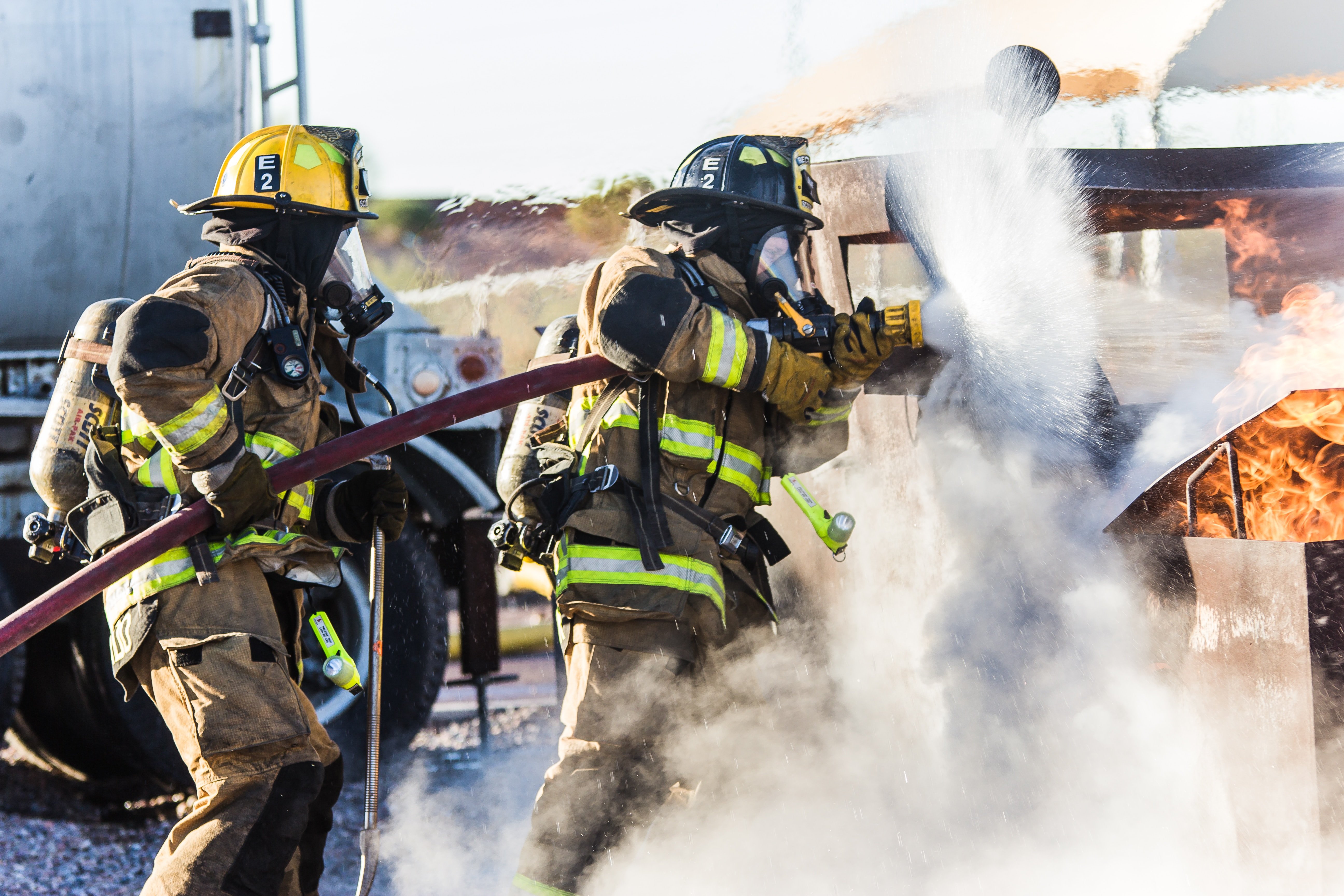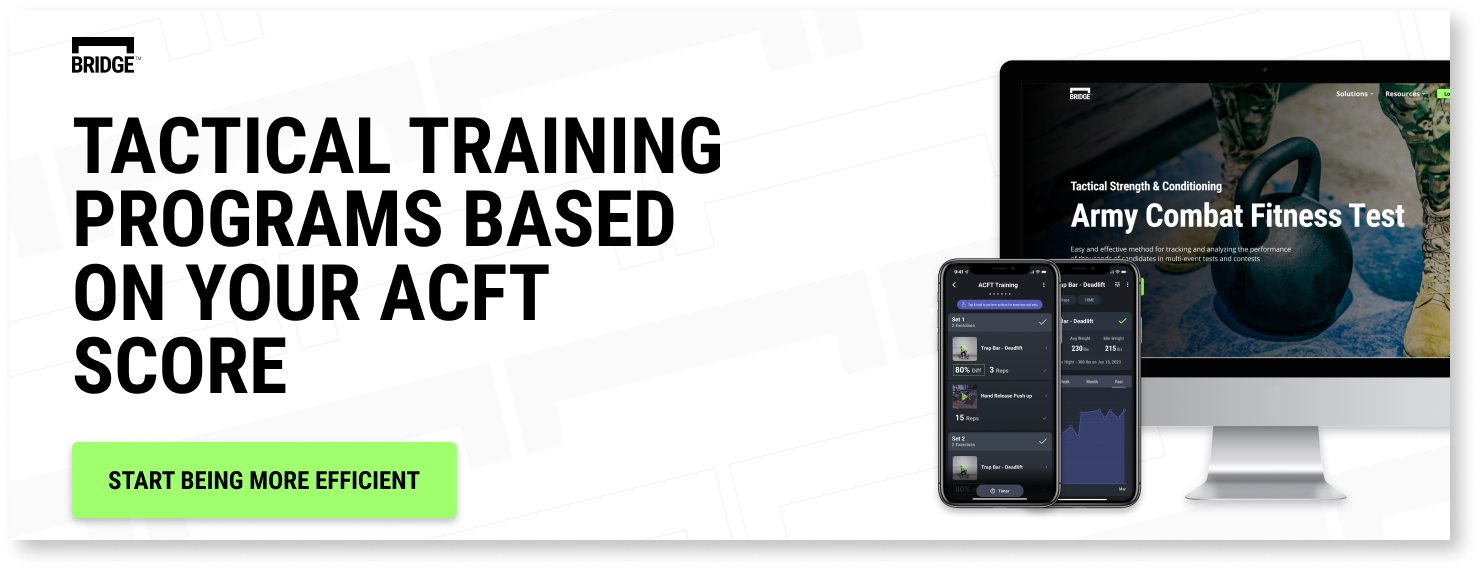Hydration & Heat Acclimatization Tactics for the Tactical Population
Summer is heating up fast - and tactical professionals do not have the option to avoid the heat. Keep your participants as cool as a cucumber with these acclimatization and hydration tips.
Heat Acclimatization
Heat acclimatization, or the gradual increase of work in a hot setting, is essential to preventing heat-related injury. Gradual exposure improves the body's ability to handle heat stress. This may reduce complications associated with heat stress, like a cardiovascular event. Exposure to extreme heat and physical exertion can activate platelets and impair vascular function. Acclimating to heat will reduce electrolyte loss through sweat, which is essential if the professional lacks access to replacement. First responders are at particularly high risk for heat stroke and cardiovascular events, making acclimatization even more important for these populations.
Decreased
- Heart rate
- Body temperature
- Sweat electrolyte loss
Increased
- Sweat rate
- Blood flow
- Physical performance
As the outdoor temperature starts to rise, professionals should gradually increase their exposure to hot environments over a 7-14 day period. Note that improving fitness during the winter and spring will produce some level of physical adaptions associated with acclimatization (ex. increased sweat rate).
Acclimatization Tips
Acclimation requires at least two hours of heat exposure per day over 7-14 days. Exposures can be broken into two, 1-hour periods if needed. Acclimatization can occur faster for those who participate in a consistent strength and conditioning program.
Exposure can include outdoor warmups, workouts, cool-downs, walks, or even outdoor drills. Start with sweat-wicking clothing and gradually add tactical gear if appropriate. It is important to stay consistent, as heat tolerance will return to baseline within one month of eliminating heat exposure.
Signs of Heat Stress
Heat stress and heat stroke is still a risk when acclimatizing a tactical professional. Heat stress is a series of conditions where the body is under stress from overheating. Be aware of the symptoms and pull an athlete out of training immediately.
- Headache
- Nausea
- Irritability
- Thirst
- Disorientation
Prevent heat stress with water breaks every 15 minutes and appropriate clothing. Appropriate clothing includes breathable garments that expel heat and sweat when exercising. Stop activity and seek shade or air conditioning if the above symptoms occur.
Hydration During Heat Acclimatization
Heat acclimatization training is the perfect time to encourage hydration habits in tactical professionals.
The Institute of Medicine recommends 2.7 liters (91 oz) of fluid per day for women and 3.7 liters (125 oz) of fluid per day for men. This includes water, sports drinks, and even water content in food (ex. cucumbers).
Tactical professionals training in the heat may need more than the 91-125 oz baseline. Prioritize electrolyte replacement during outdoor activity, as sweat losses can be significant. Firefighters in particular can lose up to 40 oz of sweat in 30 minutes of fire suppression activity. One liter of sweat (32 oz) can contain up to 1840 mg of sodium and 390 mg of potassium.
Encourage professionals to consume 8-12 oz every 15 minutes of a sports drink or oral rehydration solutions. Oral rehydration solutions (ORS) are recommended over sports drink when heat and training intensity is high. ORS packets have double the electrolytes and half the sugar of sports drinks. The extra sodium will help replenish electrolytes and encourage rapid rehydration. Sample ORS brands are Liquid I.V. and DripDrop. These products are sold in individual packets and are easy to store in tactical gear.
Note that sodium replacement is essential in hot environments due to sweat and metabolic losses. The baseline recommendation is 500-700 mg of sodium per hour. Tactical gear, heat, and individual variances may increase this need to up to 2000 mg sodium per hour! Body Armour and other low-sodium “sports drinks” are not recommended. If Body Armour is the preferred drink, pair with a salty snack like pretzels. A bit of sugar (12 grams) helps pull sodium across the cell membrane, allowing rehydration to occur faster. Diet sports drinks and ORS packets (LMNT, SOS) will still help rehydrate, but at a slower rate.
If heat and hydration-related injuries are common in your organization, consider a weigh-in / weigh-out protocol. This protocol uses an inexpensive scale in 5 minutes or less.
Weigh-in before exercise/training with as few clothes as possible
Weigh-out after exercise/training with as few clothes as possible
(Weigh-in) - (weigh-out) = pounds lost
Replace each pound lost with 16-20 oz fluid by the next training session (ideally within 2 hours, but don't force it if several pounds down)
This protocol can give a professional a metric to aim for if they are struggling to stay hydrated during training. If they are regularly losing more than 2 pounds, the focus should be on drinking more during training. This may mean aiming for at least 12 oz each break
All fluids count during rehydration after training.
Consider:
- Protein shakes or smoothies
- Chocolate milk
- Coconut water
- Pedialyte
- 100% fruit juice
- Sports drink
Water-rich foods also count towards this goal. Cucumbers, tomatoes, celery, watermelon, strawberries, and lettuce have the highest water content. Fruits and vegetables tend to have the highest water content.
To optimize recovery, aim for 20-35 g protein and 50-100 g carbohydrates. Smoothies are a great way to rehydrate considering the electrolyte, protein, and carbohydrate content. A turkey or chicken sandwich with fruit or pretzels is another post-workout meal.
Sample Hydration Schedule:
- 8-16 oz on commute in
- 8-12 oz every 15 minutes
- 16-20 oz for every pound lost
Heat acclimatization is just as important as progressive overload in training programs. As the summer heats up, don’t forget to gradually expose your tactical professionals to heat. Including these hydration tactics will help train tactical professionals to hydrate better in unpredictable conditions.
Megan Lautz, MS, RD, CSCS, TSAC-F
Megan is a Registered Dietitian and strength coach who specializes in first responder nutrition. Megan shows first responders how to eat healthier when they don’t have time, money, or energy. Megan is the owner of RescueRD LLC, which provides nutrition seminars and coaching for tactical athletes across the country. Check out @Rescue.RD on Facebook and Instagram.
Sources:
Alvar, B.A., Sell, K., Deuster, P. A. (2017) NSCA’s Essentials of Tactical Strength and Conditioning. Human Kinetics.
Fan PW, Burns SF, Lee JKW. Efficacy of Ingesting an Oral Rehydration Solution after Exercise on Fluid Balance and Endurance Performance. Nutrients. 2020 Dec 15;12(12):3826. doi: 10.3390/nu12123826. Erratum in: Nutrients. 2021 Oct 28;13(11): PMID: 33333771; PMCID: PMC7765193.
Heat Acclimatization(2019). UCONN Korey Stringer Institute. Retrieved from https://ksi.uconn.edu/prevention/heat-acclimatization/
Heat Stress Acclimatizaton. DHHS (NIOSH) Publication No. 2017-124. Retrieved from https://www.cdc.gov/niosh/mining/userfiles/works/pdfs/2017-124.pdf
Parsons IT, Stacey MJ, Woods DR. Heat Adaptation in Military Personnel: Mitigating Risk, Maximizing Performance. Front Physiol. 2019 Dec 17;10:1485. doi: 10.3389/fphys.2019.01485. PMID: 31920694; PMCID: PMC6928107. Retrieved from https://www.ncbi.nlm.nih.gov/pmc/articles/PMC6928107/#:~:text=Heat%20adaptation%20is%20a%20key,physical%20performance%20 and%20 metal%20 functioning.
Riebl SK, Davy BM. The Hydration Equation: Update on Water Balance and Cognitive Performance. ACSMs Health Fit J. 2013 Nov;17(6):21-28. doi: 10.1249/FIT.0b013e3182a9570f. PMID: 25346594; PMCID: PMC4207053.
Sherman, T., Siekaniec, C. & Johnson, S. What’s in your sweat? CSPDA. Retrieved from https://www.sportsrd.org/wp-content/uploads/2018/11/Whats-In-Your-Sweat.pdf
About the Author

Megan is a Registered Dietitian and strength coach who specializes in first responder nutrition. Megan shows first responders how to eat healthier when they don’t have time, money, or energy. Megan is the owner of RescueRD LLC, which provides nutrition seminars and coaching for tactical athletes across the country. Check out @Rescue.RD on Facebook and Instagram.




